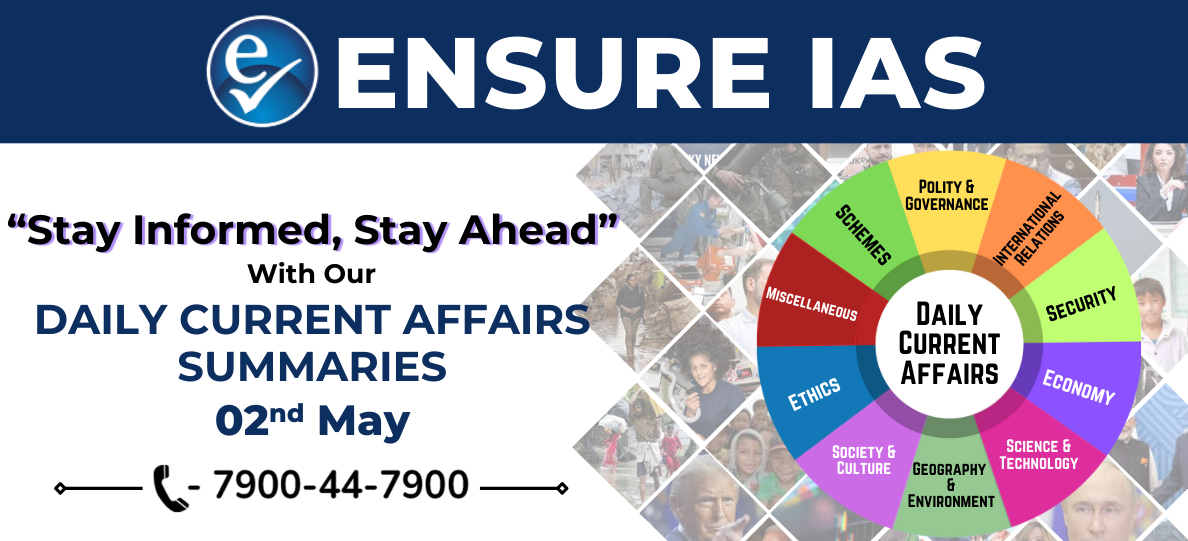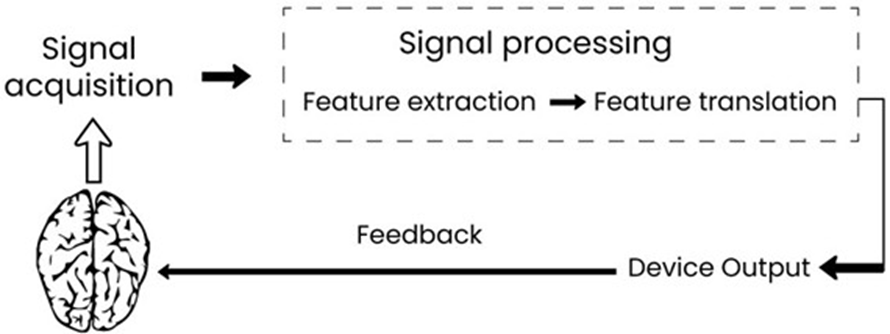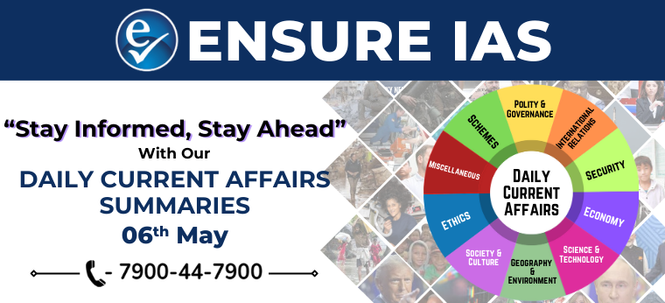- Courses
- GS Full Course 1 Year
- GS Full Course 2 Year
- GS Full Course 3 Year
- GS Full Course Till Selection
- Answer Alpha: Mains 2025 Mentorship
- MEP (Mains Enrichment Programme) Data, Facts
- Essay Target – 150+ Marks
- Online Program
- GS Recorded Course
- Polity
- Geography
- Economy
- Ancient, Medieval and Art & Culture AMAC
- Modern India, Post Independence & World History
- Environment
- Governance
- Science & Technology
- International Relations and Internal Security
- Disaster Management
- Ethics
- NCERT Current Affairs
- Indian Society and Social Issue
- NCERT- Science and Technology
- NCERT - Geography
- NCERT - Ancient History
- NCERT- World History
- NCERT Modern History
- CSAT
- 5 LAYERED ARJUNA Mentorship
- Public Administration Optional
- ABOUT US
- OUR TOPPERS
- TEST SERIES
- FREE STUDY MATERIAL
- VIDEOS
- CONTACT US
Daily Current Affairs Summary 2nd MAY 2025
Daily Current Affairs Summary 2nd MAY 2025

Inclusive Digital Access is Part of Article 21: Supreme Court Judgment
- In the landmark case Amar Jain v. Union of India and Others, the Supreme Court has expanded the scope of Article 21.
- The Court ruled that inclusive and meaningful digital access is a fundamental right under the Right to Life and Liberty.
Key Highlights of the Judgment:
- The Court emphasized that digital access must be inclusive, meaningful, and equitable for all individuals.
- It recognised the Right to Digital Access as an instinctive and essential part of the Right to Life under Article 21.
- The State's responsibility to ensure digital inclusion stems from Article 21 (Right to Life), Article 14 (Equality before law), Article 15 (Prohibition of discrimination), and Article 38 (Social Justice obligation).
- The Court invoked the principle of substantive equality, stressing that digital transformation must ensure fairness and inclusiveness.
- Directed the authorities to revise existing Know-Your-Customer (KYC) norms for banking and e-governance access.
- The revised digital KYC must be accessible to individuals with facial disfiguration (e.g., acid attack survivors) and persons with visual impairments.
- These directions were issued under the Rights of Persons with Disabilities Act, 2016.
- A total of 20 specific directions were issued by the Court to make the eKYC process more accessible and inclusive.
Significance of Inclusive Digital Access:
- Enables equal access to government welfare schemes and e-governance services.
- Helps in bridging the rural-urban digital divide.
- Ensures access to online education platforms and financial technology services.
- Empowers marginalised and vulnerable groups to participate in the mainstream development process.
- Reinforces the idea that digital accessibility is a critical enabler of constitutional rights and dignity.
|
Relevant Supreme Court Judgments on Internet and Digital Rights:
|
Climate Change-Induced Monsoon Variability Threatens Bay of Bengal’s Marine Life: Study
- A recent study over the Bay of Bengal examined climate impacts over centuries to millennia timescales.
- The study reported a 50% reduction in food availability for marine organisms due to extreme monsoon events.
- This long-term climate variability is now directly linked to disruptions in marine food chains.
How Climate Change Impacts the Bay’s Marine Ecosystem:
- Reduced Plankton Growth: Extreme monsoons disrupt the vertical mixing of nutrient-rich deep-sea water to the surface.
- Plankton, including phytoplankton (microscopic plants) and zooplankton (tiny animals), form the foundation of the marine food chain.
- Planktons not only feed larger marine life but also produce oxygen as a byproduct of photosynthesis.
- Decline in plankton due to climate stress leads to food scarcity across the marine food web.
- Loss of Marine Biodiversity: Changing Ocean conditions cause a decline in species diversity, impacting fisheries and food security.
- Disrupted Nutrient Supply: Climate change weakens wind intensity, affecting the mixing of ocean layers and nutrient circulation.
- Ocean Acidification: Rising CO₂ levels cause a drop in ocean pH, reducing calcium carbonate essential for corals and shell-forming organisms.
- This leads to weakening of coral structures and affects species dependent on coral ecosystems.
Why Marine Ecosystems Matter:
- Climate Regulation: Oceans absorb approximately 25% of all global carbon emissions, helping moderate global warming.
- Food Security: Seafood is a major source of protein for millions across coastal and island nations.
- Livelihood Support: The Blue Economy uses ocean resources for employment, income, and community sustenance.
- Economic Growth: Oceans support marine tourism, fisheries, and resource extraction, boosting national economies.
Efforts to Safeguard Marine Ecosystems:
|
Global Initiatives |
Indian Initiatives |
|
|
|
|
Union Cabinet Approves Caste Enumeration in Upcoming Census
- The Cabinet Committee on Political Affairs has given approval for caste-based enumeration in the upcoming national census.
- This decision marks a significant shift toward data-driven governance and inclusive policymaking.
Historical Background of Caste Enumeration in India:
- 1881 to 1931 (British Era): The British administration conducted detailed caste-based census for colonial administrative purposes.
- Post-Independence (1951 Onwards): The Government of India discontinued general caste enumeration, continuing only for Scheduled Castes and Scheduled Tribes to promote national unity.
- 1961 Directive: The Central Government authorized states to conduct independent surveys for identifying Other Backward Classes (OBCs).
- SECC 2011 (Socio-Economic and Caste Census):
- Conducted to collect data on the socio-economic status of households across various caste groups.
- However, caste-wise data from SECC 2011 was never officially released due to data inconsistencies.
Census in India – Constitutional and Legal Basis:
- Census is a Union Subject under Entry 69 of the Union List (Schedule VII) as per Article 246 of the Constitution.
- The Census Act, 1948 provides the legal framework for conducting census and defines the role of census officers.
Why Caste Enumeration in Census is Important:
- Judicial Mandate:
- As per Indra Sawhney & Others v. Union of India (1992), caste-based backwardness must be objectively assessed.
- The Supreme Court held that such identification should undergo periodic review by a permanent expert body.
- Promoting Social Justice:
- Caste data, along with socio-economic indicators, may help in revising the list of socially and educationally backward classes (SEBCs).
- It can enable a ‘quota-within-quota’ system, ensuring equitable distribution of reservation benefits through sub-categorization.
- Evidence-Based Policymaking:
- Accurate caste data allows for targeted welfare schemes, addressing the specific needs of underprivileged and marginalized communities.
- It will help policymakers make informed decisions based on ground realities rather than assumptions.
Courts Have Limited Powers to Modify Arbitral Awards: Supreme Court
Key Judgment: Gayatri Balasamy v. ISG Novasoft Technologies Ltd.
- The Supreme Court clarified that courts can modify arbitral awards under limited and specific circumstances.
- This power arises under Section 34 or 37 of the Arbitration and Conciliation Act, 1996.
When Can Courts Modify Arbitral Awards?
- Severability of Award: Courts may modify the award if the invalid portion can be separated from the valid one without affecting the whole.
- Legal Doctrine Invoked: The court cited "omne majus continet in se minus" – the principle that the greater power to set aside an award includes the lesser power to modify it in part.
- Clerical or Typographical Corrections: Errors involving computation, clerical mistakes, or typos may be corrected.
- Interest-Related Modifications: Post-award interest may be altered in certain conditions to align with justice.
- Article 142 of the Constitution: The court may use its powers under Article 142 to do complete justice, but only when consistent with the spirit of the 1996 Act.
Arbitration in India
- Definition: Arbitration is part of Alternative Dispute Resolution (ADR) mechanisms, where disputes are resolved outside courts through a mutually agreed private adjudication process.
- Other ADR Modes: Includes conciliation and mediation alongside arbitration.
- Why It Matters: Arbitration is considered less adversarial, faster, and more flexible than traditional litigation.
- Legal Basis: Governed by the Arbitration and Conciliation Act, 1996, based on the UNCITRAL Model Law (1985).
Key Legal Provisions in the 1996 Act
- Section 34(1): Allows recourse to a court only for setting aside an arbitral award, not for modifying it entirely.
- Section 37: Specifies appealable orders including those related to interim measures and setting aside awards.
Positive Aspects of the Judgment
- Equity Through Article 142: Enables courts to ensure fairness in commercial disputes without compromising legal principles.
- Avoids Re-Arbitration: Saves time and cost by modifying only the problematic portion, rather than starting arbitration afresh.
Concerns and Challenges
- Risk to India’s Arbitration Hub Aspirations: Expanded judicial powers may prompt businesses to prefer international arbitration venues, undermining India’s intent to become a global arbitration centre.
- No Distinction in Law: The 1996 Act does not differentiate between domestic and international arbitration, raising concerns for global investors
Brain-Computer Interface (BCI): A Breakthrough for Paralysed Individuals
- Scientists have developed a Brain-Computer Interface (BCI) system that enables paralysed individuals to control robotic arms using only their thoughts.
- The system works by detecting brain activity when a person imagines a movement, which is then processed using Artificial Intelligence (AI) to move a robotic arm accordingly.
What is a Brain-Computer Interface (BCI)?
- A BCI is a computer-based system that captures brain signals generated by the Central Nervous System (CNS).
- These signals are analyzed and translated into commands, which are sent to an external device to perform a specific action.
- It is not a voice-controlled, muscle-activated, or mind-reading system.
Major Components of a BCI System:
- Signal Acquisition: Involves measuring brain signals through sensors which are digitized and transferred to a computer.
- Feature Extraction: The acquired signals are analyzed to identify features that indicate the user’s intent, filtering out irrelevant data.
- Feature Translation Algorithm: Converts meaningful features into machine-readable commands that can operate output devices.
- Device Output: Executes the intended action such as letter selection, cursor movement, or operation of robotic limbs.

Component of BCI System
Key Applications of BCI Technology
1. Communication and Control: Acts as an alternative interface for those with physical disabilities to communicate or operate devices.
2. Medical Uses:
- Supports prevention (like controlling smoking urges or motion sickness).
- Aids in detection and diagnosis of brain-related or sleep disorders.
- Facilitates rehabilitation in patients with brain stroke or motor impairments.
3. Security and Authentication: Employs unique brainwave patterns for user identification, reducing risks associated with passwords or biometric theft.
4. Education and Training:
- Assesses how clearly a user understands studied content.
- Enables personalized interaction and adaptive learning tools.
Stockholm Convention on Persistent Organic Pollutants (POPs)
- India has raised objections to the inclusion of the hazardous insecticide Chlorpyrifos under the Convention for global phase-out in 2021.
- Chlorpyrifos is widely used in Indian agriculture, particularly for pest control in crops like cotton and rice.
Background of the Convention
- The Stockholm Convention was formally adopted in 2001 and came into force in 2004.
- It is a global treaty aimed at addressing the threat of Persistent Organic Pollutants (POPs).
Objective of the Convention
- The core objective is to safeguard human health and the environment from harmful chemical substances.
- It focuses on regulating substances that are toxic, long-lasting, and bioaccumulative in ecosystems and food chains.
Understanding POPs (Persistent Organic Pollutants)
- POPs are carbon-based organic compounds that resist environmental degradation.
- They persist for long periods, accumulate in fatty tissues, and biomagnify up the food chain.
- These substances pose serious risks to both human and wildlife health even at low concentrations.
Key Features of the Convention
The Convention maintains a dynamic list of harmful chemicals, categorized into three annexes:
- Annex A: For elimination of listed chemicals.
- Annex B: For chemicals allowed under restricted use.
- Annex C: For substances requiring reduction of unintentional releases.
India’s Role and Position
- India has signed and ratified the Stockholm Convention, reaffirming its commitment to global chemical safety.
- However, India continues to oppose the listing of Chlorpyrifos, citing agricultural dependency and lack of viable alternatives.
- The decision reflects India’s balancing act between environmental obligations and national agricultural needs.
Mendelian Inheritance: Rediscovering the Roots of Genetics
- Scientists have recently identified the specific genes responsible for the last three traits in peas originally studied by Gregor Johann Mendel.
- Mendel is widely regarded as the father of modern genetics for his foundational work on hereditary principles.
- He conducted experiments by cross-breeding around 28,000 garden pea plants to investigate how traits are passed from one generation to the next.
- His observations focused on features such as seed shape, seed color, pod shape, pod color, among others.
Objective of Mendel’s Experiments
- Mendel aimed to uncover the underlying mechanism through which traits are inherited in living organisms.
- He selected pea plants (Pisum sativum) due to their easily distinguishable traits, short lifecycle, and ease of controlled pollination.
What is Mendelian Inheritance?
- Mendelian inheritance refers to the method of genetic transmission of traits from parents to offspring through discrete units called genes.
- This approach laid the foundation for understanding how traits are passed and how genetic variation arises.
Mendel’s Three Laws of Inheritance
- Law of Dominance
- In a cross between two organisms with contrasting traits, only the dominant trait appears in the offspring of the first generation (F1).
- The recessive trait is masked but reappears in the second generation (F2).
- Law of Segregation
- Each organism carries two alleles for every trait, which separate during gamete formation, ensuring that each gamete carries only one allele.
- This ensures that traits do not blend but are inherited independently from each parent.
- Law of Independent Assortment
- Genes controlling different traits are assorted independently of one another during the formation of gametes.
- This law explains how the inheritance of one trait does not influence the inheritance of another, promoting genetic diversity.
Fair and Remunerative Price (FRP) for Sugarcane – Sugar Season 2024–25
- The Cabinet Committee on Economic Affairs (CCEA), chaired by the Prime Minister, has approved the Fair and Remunerative Price (FRP) of sugarcane for the 2024–25 sugar season.
- FRP is the minimum price that sugar mills are legally required to pay to sugarcane farmers for their produce.
- This price is declared by the Central Government to ensure fair returns to farmers while considering the industry's paying capacity.
- The power to fix FRP comes from the Sugarcane (Control) Order, 1966, under the Essential Commodities Act.
- The FRP is fixed based on the recommendations of the Commission for Agricultural Costs and Prices (CACP), which analyses cost structures and market dynamics.
- The FRP ensures a legally binding payment, irrespective of the market price of sugar, providing farmers a guaranteed income.
- In addition to FRP, certain states like Uttar Pradesh, Punjab, Haryana, and Uttarakhand announce a State Advised Price (SAP).
- SAP is usually higher than FRP, set by state governments to offer additional support to sugarcane farmers.
- Mills in these states are bound to pay the higher SAP, creating regional variations in procurement pricing.
Vikramaditya I – The Restorer of Chalukya Glory
- A rare inscription dating to the era of Vikramaditya I of the Badami Chalukya dynasty was recently discovered near Madapura Lake, in Davangere district of Karnataka.
- Vikramaditya I ruled between 644 CE and 681 CE, marking a significant phase in Chalukyan resurgence.
- He succeeded to the throne following the defeat and likely death of his father Pulakeshin II, who had earlier lost to Pallava king Narasimhavarman I.
- His reign is remembered primarily for the military revival of the Chalukyas after this setback.
- His greatest military accomplishment was the recapture of Vatapi (modern-day Badami), the Chalukya capital, which had been taken by the Pallavas.
- This reconquest re-established Chalukya dominance in the Deccan region and restored dynastic prestige.
- Apart from warfare, Vikramaditya I was a notable patron of temple architecture, contributing to the evolution of freestanding structural temples.
- These early temples laid the foundation for the later Chalukyan architectural style, blending Nagara and Dravida elements.
Sigma 8 (S8) – A Measure of Cosmic Clumpiness

Sigma 8 (S8) – A Measure of Cosmic Clumpiness
- Sigma 8 (S8) is a key cosmological parameter that quantifies the inhomogeneity or clumpiness of matter in the Universe.
- It helps scientists understand how matter is distributed—whether it is uniform or clustered—across different regions of the cosmos.
- The value of S8 is derived by counting galaxies, galaxy clusters, and other cosmic structures, which act as tracers of matter distribution.
- A higher S8 value reflects greater clustering or clumping of matter, suggesting a more uneven cosmic structure.
- In contrast, a lower S8 value indicates that matter is more evenly spread across the Universe.
- The concept is crucial to understanding the formation of large-scale structures like galaxies and voids in the universe.
- S8 Tension arises when different observational techniques—such as gravitational lensing and cosmic microwave background studies—yield inconsistent S8 values.
- This inconsistency challenges current cosmological models and hints at possible gaps in our understanding of fundamental physics.
- Recent research suggests that resolving the S8 tension could help determine the true nature and evolution of the universe.
Phthalates – Hidden Health Risks in Everyday Plastics
- A recent study has linked daily exposure to phthalates with nearly 3.5 lakh deaths globally, accounting for 13% of all heart disease-related fatalities.
- Phthalates, also known as ortho-phthalates, are a group of chemical compounds widely used in plastic manufacturing.
- They are primarily added to polyvinyl chloride (PVC) to make the plastic softer, flexible, and less brittle.
- Commonly referred to as “plasticizers,” phthalates are colorless, odorless, and oily liquids used to improve the usability of plastic products.
- These chemicals do not form a permanent bond with the plastic, making them prone to leaching into the environment and human bodies.
- Due to their physical properties, they easily migrate from products into air, food, water, and human tissues.
- Applications include a wide range of products such as pharmaceuticals, medical devices (like IV tubing), food packaging, toys, flooring materials, and personal care products.
- Repeated exposure has raised global concerns due to their potential role as endocrine disruptors and contributors to cardiovascular and reproductive health issues.
Encephalitis: Neurological Threat
- Encephalitis International, a UK-based organization, has launched a global awareness campaign to emphasize the importance of vaccination in combating the rising threat of encephalitis and other vaccine-preventable diseases.
- Encephalitis refers to the inflammation of the active tissues of the brain, which can disrupt normal brain function and pose life-threatening risks.
- This condition is caused by either an infection—viral, bacterial, fungal—or due to an autoimmune response triggered by the body's own immune system.
- Inflammation in the brain leads to symptoms such as severe headache, neck stiffness, light sensitivity, confusion, drowsiness, and seizures.
- Key viral pathogens responsible for encephalitis include the Japanese Encephalitis Virus (JEV), Influenza virus, and West Nile Virus, among others.
- The disease can affect individuals of all ages, but children, older adults, and immunocompromised people are especially vulnerable.
- In India, prevention efforts include the Universal Immunisation Programme (UIP), which offers free vaccines against 12 life-threatening diseases, including Japanese Encephalitis.
- Continued awareness and global vaccination campaigns are vital to reducing the burden of encephalitis and preventing avoidable deaths, especially in high-risk regions.
Project SeaCURE – Harnessing the Ocean to Capture Carbon
- Project SeaCURE is a pioneering carbon removal initiative launched along England’s south coast.
- It is funded by the UK government and aims to explore innovative climate solutions through marine-based technologies.
- The project operates as a small-scale pilot, testing the feasibility of extracting carbon dioxide directly from seawater.
- The core objective is to evaluate whether this method can serve as a cost-effective and scalable approach to lower atmospheric CO₂ levels.
- Unlike conventional techniques that capture emissions from industrial sources or directly from the atmosphere, SeaCURE focuses on the ocean as a carbon sink.
- The ocean contains carbon concentrations up to 150 times higher than atmospheric levels, offering a dense and untapped carbon reservoir.
- By removing CO₂ from seawater, the project aims to create a negative emissions system that complements existing carbon capture technologies.
- The success of SeaCURE could pave the way for future large-scale deployment of ocean-based carbon removal as part of global climate mitigation strategies.
|
Also Read |
|
| Public Administration Optional | |
| UPSC Monthly Magazine | Question Answer Practice For UPSC |




